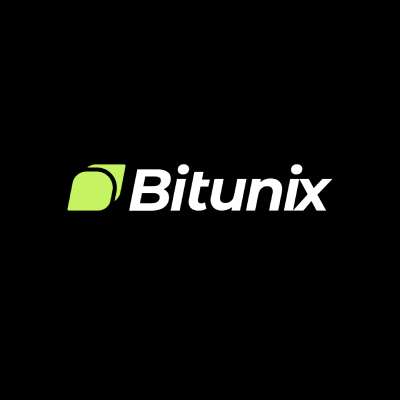績效報告
這 最快的鏈條 CoinGecko 5 月 17 日發布的報告顯示, Solana 是大型區塊鏈中速度最快的 ,每日均真實TPS最高達到1054(投票交易已移除)。 Sui是第二快的區塊鏈,最高日均真實TPS達到854。

從這份報告可以看出,表現最好的Solana和Sui都是不相容EVM的區塊鏈。此外,8 個不相容EVM 的區塊鏈的平均真實TPS 為284,而17 個相容EVM 的區塊鏈和以太坊Layer 2 的平均TPS 僅為74。 4 倍。
本文將探討 EVM相容區塊鏈的效能瓶頸 並揭示 Solana的效能優勢 .
EVM相容區塊鏈的效能瓶頸
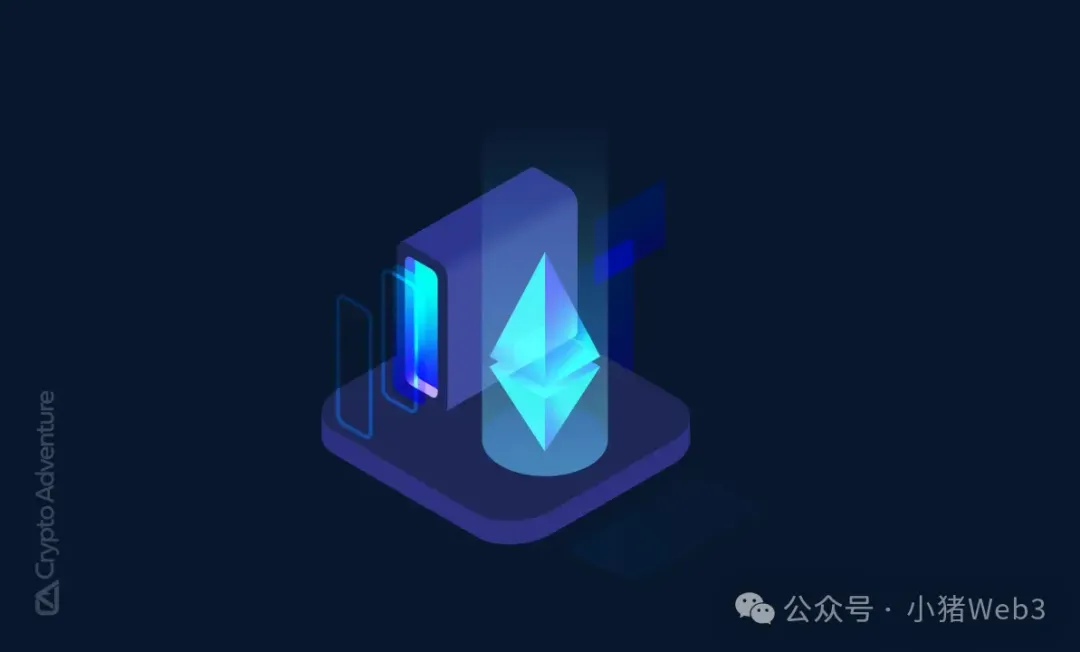
首先,我們將EVM區塊鏈推廣到通用區塊鏈。一般來說,區塊鏈希望透過以下方法來提高TPS:
-
提高節點效能: 透過硬體資源的堆砌提升節點效能。節點的硬體需求會影響去中心化程度。例如以太坊建議配置為CPU 4核心、記憶體16G、網路頻寬25Mbps,一般用戶級設備即可實現,去中心化程度高; Solana建議相對較高的配置,CPU 32核心、記憶體128G、網路頻寬1Gbps,只有專業級設備才能達到,分散程度一般;
-
完善底層協定: 包括網路協定、密碼學、儲存等。它可以直接提升區塊鏈的效能,但底層技術卻很少受到關注,目前研究領域也沒有重大突破。
-
擴充塊: 增加區塊的大小可以包含更多的交易,從而提高區塊鏈的交易吞吐量。例如,比特幣現金(BCH)將區塊大小從 1 MB 擴大到 8 MB,然後擴大到 32 MB。然而,擴大區塊也會增加傳播延遲並造成安全威脅,例如增加分叉和DDoS攻擊的可能性;
-
共識協議: 共識協議保證區塊鏈中的所有節點對區塊鏈的狀態更新達成共識。它是區塊鏈最重要的安全門。區塊鏈中已經使用的共識機制包括PoW、PoS、PBFT等。和基於Avalanche的Avalanches共識機制。
-
交易執行: 事務執行只關心單位時間內處理的事務或計算任務的數量。以太坊等區塊鏈使用串行執行來執行區塊中的智慧合約交易。在串行執行時,CPU效能瓶頸非常明顯,嚴重限制了區塊鏈的吞吐量。一般高效能公鏈都會採用並行執行,有的也會提出更有利於平行化的語言模型來建構智慧合約,例如Sui Move。
對於EVM區塊鏈來說, 最大的挑戰在於交易執行 因為虛擬機,即交易的執行環境是有限的。 EVM 有兩個主要效能問題:
-
256 位元: EVM 被設計為 256 位元虛擬機,以便更輕鬆地處理以太坊雜湊演算法,該演算法將明確產生 256 位元輸出。然而,實際運行EVM的電腦需要將256位元組映射到本地架構來執行。一個EVM操作碼將對應多個本地操作碼,使得整個系統效率非常低且不實用;
-
缺乏標準庫: Solidity中沒有標準函式庫,必須自己使用Solidity程式碼來實作。雖然OpenZeppelin在一定程度上改善了這種情況,但他們提供了Solidity實現的標準庫(透過將程式碼包含在合約中或以delegatecall的形式呼叫部署的合約),但EVM字節碼的執行速度遠慢於EVM字節碼預編譯的標準函式庫。
從執行最佳化的角度來看,EVM仍有兩大缺點:
-
難以進行靜態分析: 區塊鏈中的平行執行意味著同時處理不相關的交易,將不相關的交易視為互不影響的事件。實現並行執行的主要挑戰是確定哪些事務不相關、哪些事務獨立。目前有些高效能公鏈會事先對交易進行靜態分析,而EVM的動態跳轉機制使得程式碼進行靜態分析變得困難;
-
JIT編譯器不成熟: JIT編譯器(Just In Time Compiler)是現代虛擬機器常用的最佳化方法。 JIT 的主要目標是將解釋執行轉變為編譯執行。在運行時,虛擬機器將熱代碼編譯為與本地平台相關的機器代碼,並執行各種級別的最佳化。雖然有EVM JIT項目,但仍處於實驗階段,不夠成熟。
因此,在虛擬機的選擇上,高效能公鏈傾向於使用基於WASM、eBPF字節碼或Move字節碼的虛擬機,而不是EVM。例如,Solana 使用自己獨特的虛擬機器 SVM 和基於 eBPF 的字節碼 SBF。
最快的鏈:Solana

Solana 以其 PoH(歷史證明)機制以及低延遲和高吞吐量而聞名,是最著名的以太坊殺手之一。
PoH 的核心是一種類似於可驗證延遲函數 (VDF) 的簡單雜湊演算法。 Solana 使用連續運行的序列原像抗雜湊函數 (SHA-256),並使用一次迭代的輸出作為下一個迭代的輸入。此計算在每個驗證器的單一核心上運行。
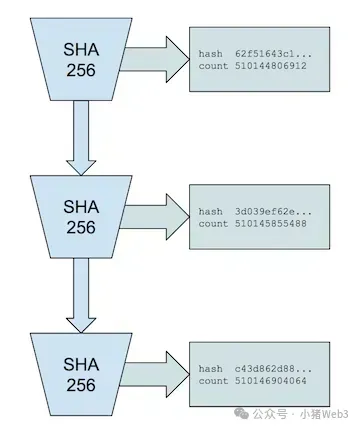
雖然序列生成是順序且單執行緒的,但驗證可以並行完成,從而允許在多核心系統上進行高效驗證。雖然哈希速度存在上限,但硬體改進可能會帶來額外的效能提升。
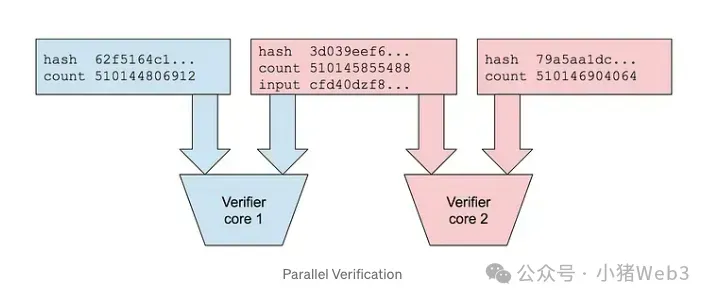
Solana 共識流程
PoH 機製作為可靠且無需信任的時間來源,在網路內建立可驗證且有序的事件記錄。基於 PoH 的計時 允許 Solana 網路以預定且透明的方式輪換領導者 。這種輪換以 4 個時隙的固定時間間隔發生,每個時隙目前設定為 400 毫秒。這種領導者輪調機制確保每個參與的驗證者都有公平的機會成為領導者,是 Solana 網路保持去中心化和安全性的重要機制,防止任何單一驗證者在網路上獲得過多的權力。
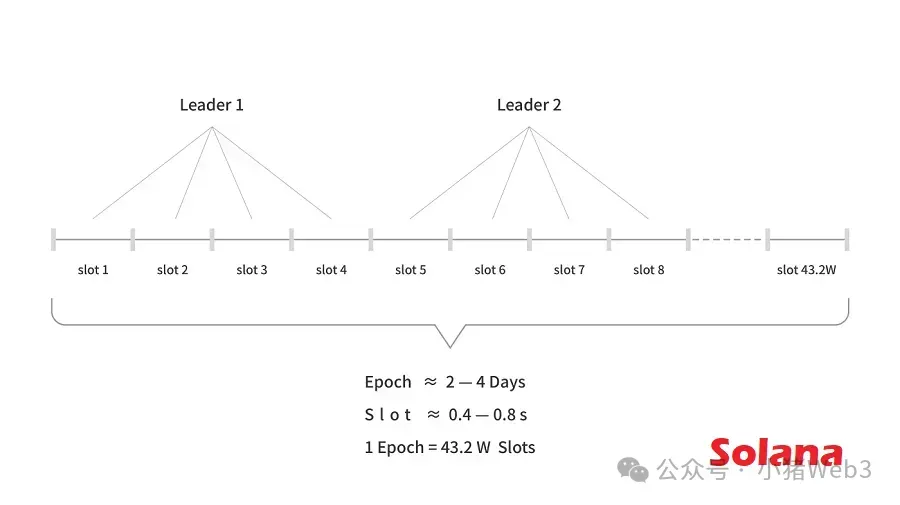
在每個時隙期間,領導者提出一個包含從使用者收到的交易的新區塊。領導者驗證這些交易,將它們打包成一個區塊,然後將該區塊廣播給網路的其餘驗證器。這種提議和廣播區塊的過程稱為區塊生產,網路中的其他驗證者必須對區塊的有效性進行投票。驗證者檢查區塊的內容,以確保交易有效並遵循網路規則。如果一個區塊獲得了權益權重的多數票,則該區塊被視為已確認。此確認過程對於維護 Solana 網路的安全和防止雙重支出至關重要。
當當前領導者的時間段結束時,網路不會停止或等待區塊確認,而是移動到下一個時間段,讓後續領導者有機會生產區塊,整個過程重新開始。這種方法可確保 Solana 網路保持高吞吐量並保持彈性,即使某些驗證器遇到技術問題或離線也是如此。
索拉納性能
由於Solana網路可以提前確認領導者,因此Solana不需要公共記憶體池來保存用戶交易。當用戶提交交易時,RPC 伺服器將其轉換為 QUIC 封包並立即將其轉發給領導者驗證器。這種方法稱為 Gulf Stream,它允許快速領導者過渡和交易預執行,從而減少其他驗證器的記憶體負載。
Solanas 區塊資料被帶入核心空間,然後傳遞到 GPU 進行平行簽名驗證。一旦在GPU上驗證了簽名,資料就會被傳遞到CPU進行交易執行,最後回到核心空間進行資料持久化。這種將資料劃分為不同硬體組件的多個處理步驟的過程稱為管線,它可以最大限度地提高硬體利用率並加快區塊的驗證和傳輸。
由於 Solanas 事務明確指定要存取哪些帳戶,因此 Solanas 事務調度程序可以使用讀寫鎖定機制並行執行事務。 Solana 事務調度器的每個執行緒都有自己的佇列,佇列獨立順序處理事務,嘗試鎖定(讀寫鎖定)事務的帳戶並執行事務,帳戶衝突的事務將稍後執行。這種多執行緒並行執行技術稱為Sealevel。
領導者傳播區塊的過程將 QUIC 資料包(可選地使用糾刪碼)劃分為更小的資料包,並將它們分發給分層結構中的驗證者。這種技術稱為渦輪機,主要用於減少領導者頻寬的使用。
在投票過程中,驗證者使用共識機制進行分叉投票。驗證者無需等待投票即可進行區塊生產;相反,區塊生產者持續監控有效的新投票並將其實時合併到當前區塊中。這種共識機制稱為 TowerBFT,透過即時合併分叉投票,Solana 確保了更有效率、更精簡的共識流程,從而提高了整體效能。
為了區塊的持久化,Solana開發了Cloudbreak資料庫,它以特定的方式對帳戶資料結構進行分區,以受益於順序操作的速度,並使用記憶體映射檔案來最大限度地提高SSD的效率。
為了減輕驗證者的負擔,Solana 將資料儲存從驗證者轉移到名為 Archiver 的節點網路。交易狀態的歷史被分割成許多片段並使用糾刪碼技術。 Archiver用於儲存狀態碎片,但不參與共識。
總結
Solana 的願景是成為一個其軟體可與其硬體速度同步擴展的區塊鏈,因此 Solana 充分利用當今電腦中可用的所有 CPU、GPU 和頻寬能力來最大限度地提高效能,達到理論上的最大速度65,000 TPS 。
正是由於 Solana 的高效能和可擴展性,Solana 成為處理高頻交易和複雜智能合約的首選區塊鏈平台。無論是年初的DePIN/AI賽道,還是最近火熱的Meme賽道,Solana都展現出了巨大的潛力。
在以太坊 ETF 推出後,Solana 也成為了下一個 ETF 呼聲最高的加密貨幣,儘管 SEC 仍將 Solana 列為證券,短期內不會批准其他加密貨幣 ETF。但在加密市場,共識就是價值,索拉納斯共識可能會變得像比特幣和以太坊一樣堅不可摧。
本文源自網路:揭秘區塊鏈速度之王-Solana
相關:ETH ETF敘事交易指南:抓住ETH生態和RWA板塊的黃金機會
原作者:0X KYLE 原譯:TechFlow 簡介 在本文中,作者分析了以太坊 ETF 的推出及其對市場的潛在影響,並提出了具體的交易策略。儘管在寫作期間市場發生了變化,但筆者認為仍有獲利空間。本文不僅探討了以太坊及其相關資產的表現,也涉及了新監管環境下RWA(現實世界資產)產業的機會。文字內容 我於2024年5月24日開始寫這篇文章,當時ETH的價格為$3632.22,ONDO的價格為$1.08。儘管某些資產的價格在撰寫過程中發生了變化,但作者認為,儘管風險/回報率降低,但上行潛力仍然存在。





